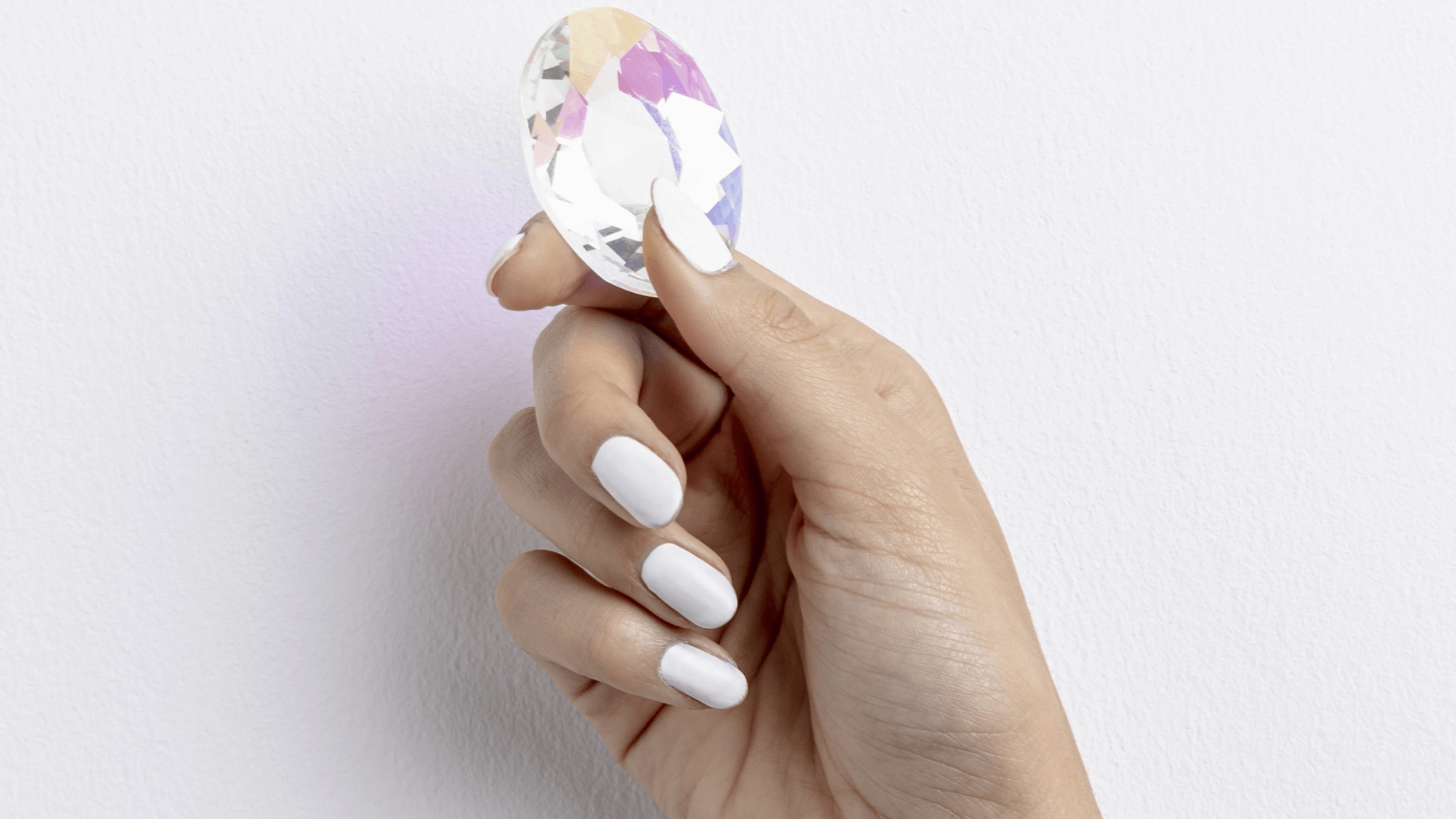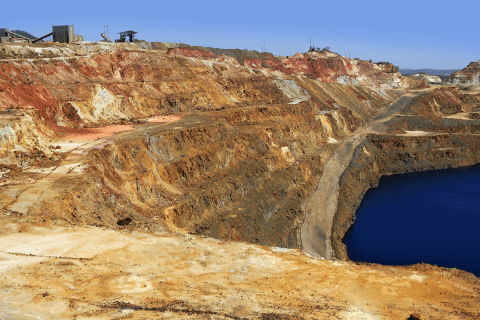Lab-grown diamonds are more ethical. Their production does not involve human rights violations. They also have a lower carbon footprint than natural diamonds mined from the earth.
Mining natural diamonds harms the environment, as the mining process contaminates water sources. It pollutes the air and consumes many fossil fuels, not to mention land and ecosystem disruption.
Furthermore, countries in the diamond mining business are politically unstable. Here, human rights violations and anarchy are common. You probably heard of the “blood diamonds” associated with conflict and child labor. Lab-grown diamonds are not associated with these issues.
Many consumers believe that by purchasing natural diamonds, they are saving the planet, but that’s not always the case.
If you worry about lab-grown diamonds’ authenticity, rest assured, they are genuine diamonds. Keep reading to find out more.
In this article, we’ll discuss if lab-grown diamonds are more ethical and sustainable. We will also cover the environmental impact of lab-grown versus mined diamonds. You’ll also learn the moral benefits of lab-grown diamonds.
What are lab-grown diamonds?
Lab-grown diamonds are real uncut diamonds made in the lab rather than mined from the earth. They have the same chemical and physical properties as naturally occurring diamonds, so it’s hard to tell them apart.
Additionally, these cultured diamonds are less expensive, although not cheap. The price difference is due to a shorter supply chain and mining cost savings.
Lab-grown diamonds reduce the amount of time it takes to make a diamond. The lab method is cost-effective because there is less work and fewer hands involved, and the sale price of lab-grown diamonds reflects this.
Cultured diamonds are also a suitable heirloom due to their durability. Today, the grading and certification for all diamonds are the same, be they cultured or natural.
Lab-grown diamonds form in one of two ways: High-Pressure, High-Temperature (HPHT), or Chemical Vapor Deposition (CVD). It takes about two months for a lab diamond to form.
HPHT diamonds form after a diamond seed lies in a chamber together with graphite. It is then exposed to extreme pressure and heat, causing it to form into a diamond.
CVD diamonds form after exposure of a small piece of carbon to a plasma of chemicals. The chemicals cause it to deposit onto a diamond seed, slowly growing a diamond.
Chemical Vapor Deposition is a modern method used in recent times.
Are lab-grown diamonds more ethical and sustainable?
Jewelry experts confirm that cultured diamonds are more ethical and sustainable than mined diamonds. The conscious consumer also knows that they have a lower negative environmental impact.
The laboratory diamond-making sector is rapidly expanding, and more and more laboratories are adopting renewable energy sources to reduce their carbon footprint.
Cultured diamonds and ethics
Lab-grown diamond production is ethical and devoid of human rights infringement. Children don’t have to drop out of school to mine diamonds for food, to support their families, or pay school fees.
Cultured diamonds have zero association to conflict and human atrocities miners go through. There is no forced labor by governments and diamond mining companies.
Additionally, military regimes do not live off lab-grown diamond proceeds, and workers are not exploited and underpaid.
Blood diamonds led to the Kimberly Process and certification, which aims at ensuring diamonds in the market aren’t associated with disturbing circumstances like genocide.
The Kimberly process, however, is limited. It is difficult to trace the origin of diamonds. You can’t honestly say a diamond is 100% from clean mining where workers’ wages are fair and working spaces safe.
Conversely, lab working conditions meet safety standards. Traditional miners work in hazardous mines. For lengthy hours, they dig, backs arched in small tunnels, and breathing becomes difficult as you move deeper.
Cultured diamonds and sustainability
Lab-grown diamonds are more environmentally friendly compared to natural diamond mining. The lab processes, for instance, are water-less.
Furthermore, growing a diamond in a lab uses far less energy than digging one out of the ground.
More and more companies are gaining the Certification Standard for Sustainable Diamonds by carefully controlling the CVD process. That is why we now have more lab-grown diamonds, which are both certified and sustainable.
Cultured diamonds are naturally and substantially less harmful to the environment. Aside from using less energy and water, the carbon footprint is far lower than mining.
To find one carat of diamond, miners must dig up tons of dirt. Diamond mining causes water contamination and soil damage.
Mining has also resulted in habitat destruction in Canada and elsewhere. The Wall Street Journal in 2016 reported that De Beers caused 18,403 fish to die after it drained a Canadian lake for diamond mining. In India, diamond mines have exacerbated the plight of tigers, which are already critically endangered.
Environmental impact of lab-grown versus mined diamonds
Natural diamonds form over millions of years. Mining them has a significant negative impact on local ecosystems. Cultured diamonds grow in a laboratory in a matter of weeks. They don’t need mining or other activities that can harm the environment.
So, which type of diamond is better for the environment? It’s cultured diamonds.
The majority of the environmental impact of cultured diamonds comes from energy consumption. The energy used in the lab to power the laboratory equipment for diamond formation is enormous.
On the other hand, the adverse effects of mining below are much greater and they include:
- Water pollution
- Water wastage
- Soil erosion
- Pollution of water sources from runoff water from mines and waste dumping
- Soil degradation and dangerous deep excavations with wide holes visible from space
For every mined carat, 127 gallons of water go into waste, and the acid water flows into rivers. That raises concerns about the sustainability of water usage and water pollution. The process uses up vast fossil fuels and releases 143 pounds of greenhouse gases.
Diamond mining disrupts the ecosystem and, in some cases, destroys biodiversity. For example, marine mining kills sea plants and animals during drilling. Alluvial mining, which redirects rivers, interferes with nature.
There are also greenhouse gas emissions and deforestation. The machinery used and explosives also pollute the air.
Ethical benefits of lab-grown diamonds
The ethical benefits of lab-grown diamonds are reasonable prices, controlling child labor, and delienating diamonds from conflict and exploitation.
When you buy your engagement or wedding ring, you want the peace of mind that its origin is pure. It should not be the outcome of rebel militia atrocities or child labor.
Here are some of the ethical benefits of lab-grown diamonds:
Lab-grown diamonds are conflict-free and blood free
African countries with precious stones like diamonds have known no peace for a long time. Civil war coupled with murders, rape, and militia regimes has rendered citizens hopeless. Some examples include the DRC and Zimbabwe.
Cultured diamonds and child labor
Communities living in diamond minefields often force children as young as four to mine. Since children are small, they work in the mine shafts, where they dig for long hours to bring piles of dirt and, if lucky, diamonds.
Forced child labor denies these children education and the chance to enjoy their childhood. They work to add to household income for food and shelter, and the poverty cycle never ends.
Factories that cut and polish diamonds prefer children workers over adults. They seem to believe children have better eyesight and their work performance is better than that of adults.
Lab-grown diamonds curb poor mining conditions, exploitation, and underpayment
Many families who work in diamond mines toil for long hours and are underpaid. They are abused and punished unjustly by unregulated small-scale mining firms.
Lab-grown diamonds are sustainable diamonds
Sustainability involves many factors. Lab-grown diamonds form in lab-controlled environments, which mimic the natural diamonds’ formation on the earth.
Miners sift 200-250 tons of earth for every diamond carat mined. The job demands heavy machinery, which releases many greenhouse gases into the atmosphere.
More worryingly, diamond miners leave towns with huge holes that are dangerous, as is the case with the Mir Mine in Eastern Siberia. The abandoned 1,722-foot-deep crater has been there since 2004.
Shockingly, we’re destroying so much land to locate gemstones when we can now grow them in a controlled atmosphere.
Each year, diamond mining becomes less sustainable. That’s because, practically, we have mined all diamonds from the earth’s core. Mining is now relocating to cold Russia and Canada after the kimberlite pipelines in Africa depleted. Mining will need more energy to extract diamonds in these cold areas.
Let’s discuss energy usage when generating lab-created diamonds, as some may see this as a hidden drawback.
The process of making diamonds in the lab used to be much more carbon demanding than it is now.
A study done on diamond sustainability compared the energy intensity of mined diamonds to a lab process. It compared BHP Billiton’s Ekati mine in Canada with lab-created diamonds from Gemesis in the US.
The study revealed that Gemesis’ lab-grown diamonds created less than one-fifth of Ekati’s CO2 emissions. It also estimated that replacing the Ekati mine’s annual diamond production with lab-grown diamonds would save 483 million miles of vehicular emissions.
You get the diamond at reasonable, ethical prices that aren’t overrated
Companies that mine earth-formed diamonds mark up the price by 100 percent or more. There’s a lengthy, murky history of how the De Beers organization monopolized the market.
Through advertising campaigns like “Diamonds are Forever,” they promoted the notion that the bigger the diamond, the greater the love carries on.
The corporation succeeded in transforming the way people think about diamonds. Specifically, how we, as customers, equate them with marital bliss and personal achievement.
De Beers is also responsible for the widely held belief that diamonds are extremely rare. That was once true, but is no longer so.
On the other hand, lab-grown diamonds are far cheaper. Not because of huge supply-chain gaps, but because they don’t come with an exorbitant markup! The price tag for a lab-grown diamond is linked to its production cost in the lab, and nothing more.
Conclusion
Lab-grown diamonds are real diamonds and are more ethical than natural diamonds if produced in optimum conditions using renewable energy. They are also a better alternative to the negative environmental impact associated with mining diamonds from the earth’s core.
Lab-grown diamonds make the supply chain easy to trace and free from conflicts and human rights issues.
Are you convinced? Head to Etika Jewels® to see their collections of beautiful jewelry and learn more about the evolution of lab-grown diamonds.


